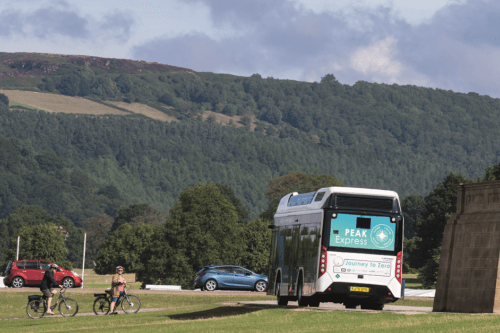
Jonathan Welch speaks to the people behind Derbyshire’s Peak Gateway development, which is planning a series of zero-emission tourist bus routes to take guests to destinations across the Peak District
The Peak District has long been a popular destination for tourists, both day visitors and long-stay guests. Its central location makes the area easily accessible from most of the major metropolitan areas in the north and Midlands, and its landscape, scenery and attractive towns make it a draw for all kinds of activities. Within 75 miles live around 20m people in an area that encompasses five of England’s six largest cities and six major airports.
However, whilst its fringes are well-served with motorways and railways, visitors to the Peak District will be only too familiar with some of the major A-roads which funnel traffic through its towns and villages, often struggling to cope with the demands of summer traffic. The A57 ‘Snake Pass’ between Sheffield and Manchester, the A628 Woodhead Pass, between Barnsley and Manchester and the the ’Cat and Fiddle Road’ from Macclesfield to Buxton will be some which are familiar to coach drivers heading to the region.
For those wanting to arrive by coach or bus, a number of companies serve the region, including well-known names such as Trentbarton, Hulley’s of Baslow and National Express, with services providing access to Matlock, Bakewell and Buxton to name but a few, from places including Derby, Nottingham, Manchester and Sheffield. But as much as we might want visitors to arrive by bus, the reality is that most of those who want to enjoy or explore the Peak District arrive my car, clogging up the roads and struggling to find parking.
[…]By subscribing you will benefit from:
- Operator & Supplier Profiles
- Face-to-Face Interviews
- Lastest News
- Test Drives and Reviews
- Legal Updates
- Route Focus
- Industry Insider Opinions
- Passenger Perspective
- Vehicle Launches
- and much more!


